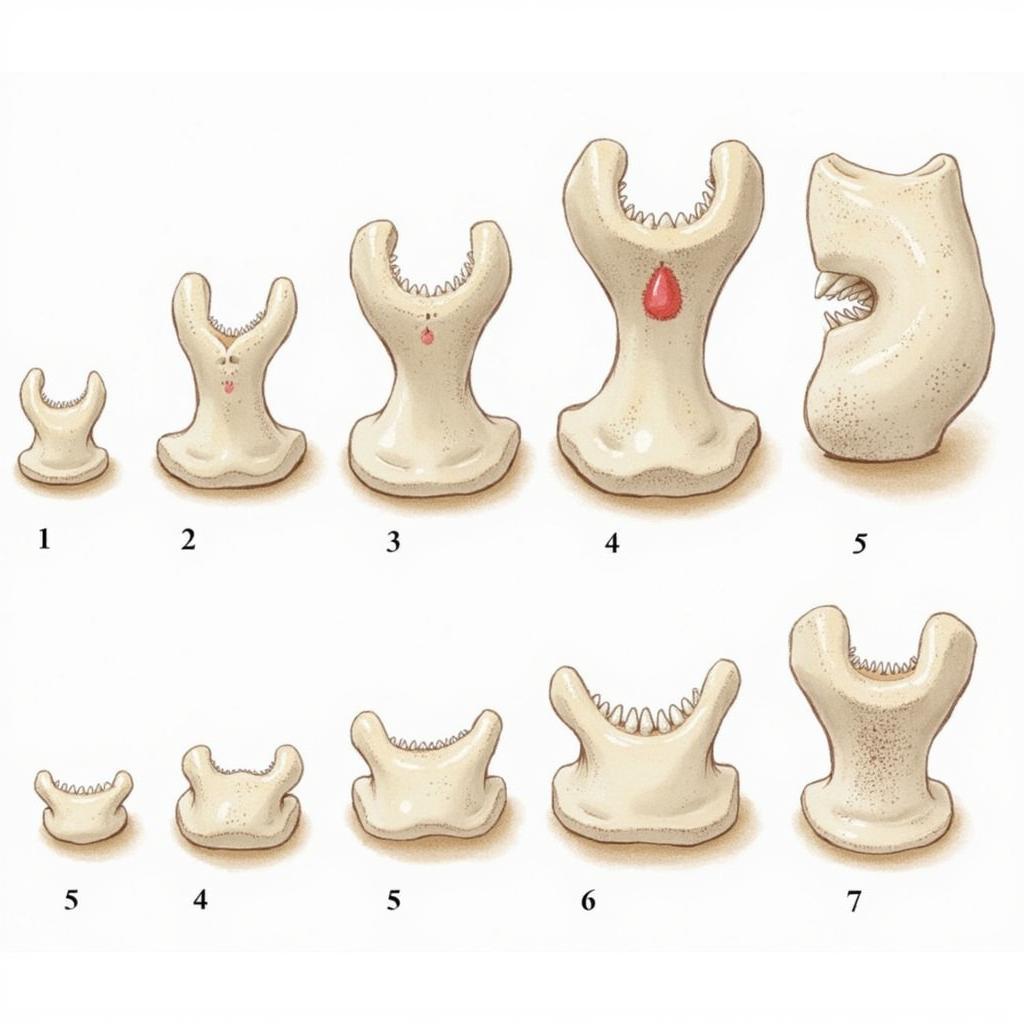African Elephants Only Have 4 Teeth: A Dental Deep Dive
African elephants only have four teeth at any given time, a surprising fact considering their massive size and plant-based diet. These remarkable creatures have evolved a unique tooth replacement system to cope with the wear and tear of grinding down tons of vegetation throughout their lives. This article delves into the fascinating world of elephant dentistry, exploring how these few teeth power a lifetime of eating and the critical role they play in the elephant’s survival.
The Elephant’s Remarkable Tooth Replacement Cycle
Unlike humans who have two sets of teeth, elephants have six sets of molars that erupt sequentially throughout their lives. Each molar is significantly larger than the previous one, with the final set appearing in their late 40s or early 50s. As the front teeth wear down from constant grinding, they are pushed forward and eventually fall out, replaced by new molars emerging from the back of the jaw. This conveyor belt-like system ensures that the elephant always has functional teeth for grazing. You can learn more about African elephants and their Asian counterparts by exploring their size differences on this page: african and asian elephant size.
 African Elephant Molar Replacement Cycle
African Elephant Molar Replacement Cycle
How Many Teeth Do African Elephants Have at Once?
At any given moment, an African elephant typically has only four functional teeth: two on the upper jaw and two on the lower jaw. These teeth work together like massive grinding stones, pulverizing tough plant material. The intricate ridges and valleys on the surface of these molars maximize their grinding efficiency, allowing elephants to process vast quantities of food every day.
The Role of Teeth in an Elephant’s Diet
An elephant’s diet consists primarily of grasses, leaves, bark, and fruit. These tough plant materials require significant processing to extract the necessary nutrients. Their robust teeth are essential for breaking down these fibrous foods, facilitating efficient digestion and nutrient absorption. The wear and tear on their teeth are substantial, making the unique replacement system crucial for their survival. This constant grazing also influences their social structure and movements across the African savannah. For more fascinating insights about African elephants, check out 25 amazing facts about african elephants.
What Happens When an Elephant’s Last Teeth Wear Out?
When an elephant reaches old age and its last set of molars wears out, it can struggle to eat sufficiently, leading to malnutrition and ultimately death. This natural process is a significant factor in the lifespan of wild elephants. It highlights the crucial role of teeth in their overall health and well-being.
Conservation Concerns and the Ivory Trade
The illegal ivory trade poses a significant threat to African elephant populations. Poaching for ivory not only decimates elephant numbers but also disrupts their social structures and ecological roles. Learn more about the devastating impact of the ivory trade on african elephant ivory trade. Understanding the intricate connection between an elephant’s teeth and its survival underscores the urgent need for continued conservation efforts. For those interested in the African elephant’s scientific classification, visit this informative page: african elephant scientific name.
How Does Tooth Wear Affect Elephant Behavior?
As their teeth wear down, elephants may shift their diet to softer vegetation or even mud, which can provide essential minerals. This change in feeding behavior can impact the ecosystem, altering vegetation patterns and affecting other herbivores.
Conclusion
The seemingly simple fact that African elephants only have four teeth at a time reveals a complex and fascinating adaptation that is crucial to their survival. Their unique tooth replacement cycle, the role of these teeth in their diet, and the threats posed by poaching and habitat loss all underscore the importance of understanding and protecting these magnificent creatures. The future of African elephants relies on continued conservation efforts and a deeper understanding of their unique biology, including the fascinating story of their four ever-changing teeth.
FAQ
- How many sets of teeth do elephants have in their lifetime? Elephants have six sets of molars.
- Why do elephants only have four teeth at a time? This is due to their unique tooth replacement system where older, worn teeth are replaced by new molars growing in from the back.
- What do elephants eat? Elephants primarily eat grasses, leaves, bark, and fruit.
- How does tooth wear affect older elephants? Worn teeth can lead to malnutrition and difficulties in eating, impacting their overall health and survival.
- What is the biggest threat to African elephants? The illegal ivory trade and habitat loss are the most significant threats.
- How does the elephant’s diet affect its teeth? The tough, fibrous diet causes significant wear and tear on the teeth, making the replacement cycle crucial.
- Are African elephants related to other animals? Yes, you can find information about the african elephant relatives.
Need more information about African wildlife? Explore our website for additional articles and resources.
For any assistance, please contact us:
Phone: +255768904061
Email: kaka.mag@gmail.com
Address: Mbarali DC Mawindi, Kangaga, Tanzania
Our customer service team is available 24/7.

